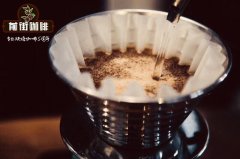Coffee native species What does it mean? Ye Jia Xue Fei heirloom is a confidential work of local coffee varieties

Professional coffee knowledge exchange more coffee bean information please follow the coffee workshop (Wechat official account cafe_style)
Front Street-introduction to Heirloom Coffee
There are hundreds of coffee tree species on the earth, and nearly 100 Arabica species alone, but when it comes to fine coffee, only Arabica beans can be called fine coffee, but it is not that all Arabica species belong to fine coffee, because with the trend of variety improvement in recent years, many excellent Arabica species are growing less and less because of their low yield and resistance to diseases and insect pests. It was gradually replaced by some new and improved species. But the production of real boutique coffee depends on excellent Arabica trees.
Ethiopia Heirloom Ethiopian native species
There is no complete scientific research on this, but there are about 1000 varieties derived from Ethiopian native species, which later spread to Yemen, India, Indonesia and South America. Among them, Tippika is one of the descendants of the original species. Ethiopian native species are very rich in flavor, with characteristics ranging from elegant floral (typical jasmine) to citrus (typical lemon), as well as chocolate and wild berries.
The word native species may be too general, but there are still some advantages to using it.
First of all, naming each variety one by one is also a problem, because the same variety is not often found in different areas. If you grow a variety in Haararge and the same variety in Yegashafi, you can't get the same planting potential and the same flavor quality. This means that varieties grown in different areas have different characteristics, so it may be confusing to call the variety by the same name.
If buyers take the time to familiarize themselves with all the varieties in Guji, they may find that the variety information of Guji is not helpful when looking at the completely different varieties in Haararge, which makes it very difficult for a single buyer to learn about Ethiopian coffee varieties.
Another challenge is that producers are accustomed to mixing various varieties at the time of harvest and simply refer to the harvested coffee as the original species to sell. Therefore, if you only want buyers of regional local varieties, it may be difficult to buy the varieties they want.
If a buyer asks him to purchase regional varieties from a particular area, he may only be able to provide 50 or 100 bags, and there may be no more. He also needs potential buyers to inform him of such needs before the harvest to ensure that the varieties of the harvest will not be mixed together to meet the needs of the buyers.
This is also related to the fact that many farmers in Ethiopia are small farmers who grow coffee as a cash crop and choose their varieties according to their disease resistance and high yield, while the quality of flavor is a secondary consideration.
Knowledge: Elaraby plus seed and Robasta seed are divided into individual coffee and Italian coffee according to the matching of coffee beans.
In short: Qianjie is a coffee research hall, happy to share the knowledge about coffee with you, we share unreservedly just to make more friends fall in love with coffee, and there will be three low-discount coffee activities every month. The reason is that Qianjie wants to make more friends drink the best coffee at the lowest price, which has been Qianjie's tenet for 6 years!
END
Important Notice :
前街咖啡 FrontStreet Coffee has moved to new addredd:
FrontStreet Coffee Address: 315,Donghua East Road,GuangZhou
Tel:020 38364473
- Prev

Introduction to the characteristics and Flavor of Ethiopian Coffee beans
Professional coffee knowledge exchange more coffee bean information please follow the coffee workshop (Wechat official account cafe_style) front street-Heirloom coffee introduction when we talk about Ethiopian coffee, some people will use jasmine, rose fruit, magnolia and other words to describe the fragrance of flowers, but you have been curious
- Next

Ethiopian ethiopia Coffee Bean heirloom Family Treasure Local Coffee varieties
Professional coffee knowledge exchange more coffee bean information please follow the coffee workshop (Wechat official account cafe_style) front street-Heirloom Coffee introduction people who often drink Ethiopian coffee should have heard of this variety [Heirloom native species], most Ethiopian varieties will be named after this, in fact, because Ethiopia has so many varieties, it is like Arabica
Related
- Beginners will see the "Coffee pull flower" guide!
- What is the difference between ice blog purified milk and ordinary milk coffee?
- Why is the Philippines the largest producer of crops in Liberia?
- For coffee extraction, should the fine powder be retained?
- How does extracted espresso fill pressed powder? How much strength does it take to press the powder?
- How to make jasmine cold extract coffee? Is the jasmine + latte good?
- Will this little toy really make the coffee taste better? How does Lily Drip affect coffee extraction?
- Will the action of slapping the filter cup also affect coffee extraction?
- What's the difference between powder-to-water ratio and powder-to-liquid ratio?
- What is the Ethiopian local species? What does it have to do with Heirloom native species?

